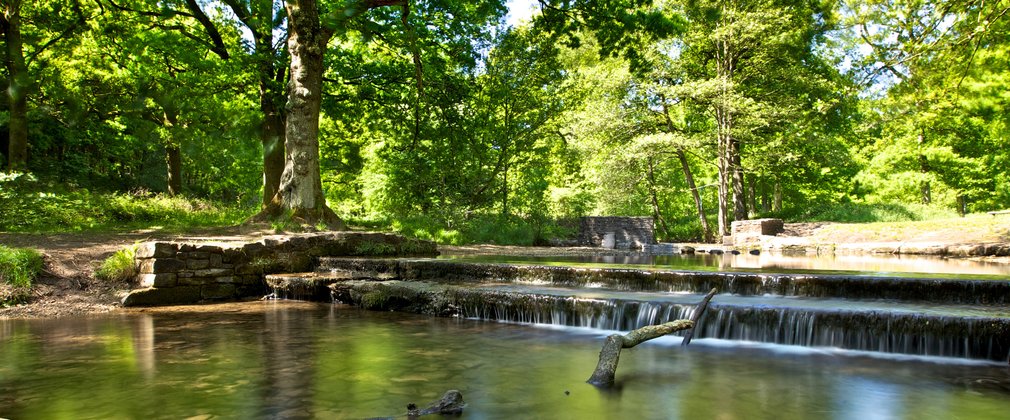Works to Wenchford weir
UPDATE 23/09/2025 - Works have been delayed until 2026
In September 2025 the picnic area and car park at Wenchford will be closed while we carry out work to the weirs. This could take up to four weeks.
The weirs have partially collapsed due to erosion. Without intervention water will continue to erode and undermine what is left of the structure.
This presents an opportunity to improve the passability of the site for fish.

What will the works involve?
The steps in both upper and lower weirs will be removed entirely and the supporting stonework repaired where practically possible, and repointed.
The stream bed will be modified to allow a gradual slope with a natural rocky bed to prevent future erosion. A larger area of beach will be created and measures taken to prevent further erosion of the stream banks. The width of channel running through the weirs will be narrowed and stepping stones will be placed to allow better access to the beach area.
While we work, and to allow a safe and dry working area, the watercourse will be temporarily dammed and rerouted.
Why are you doing this?
The steps of the lower weir is significantly undermined and crumbling. This is unsafe and will only collapse further.
Rebuilding it in its current form has been considered, but it is not the best course of action for the fish that live in this water course. Species such as Eel, Lamprey, Trout and Bullhead currently struggle to move upstream across the weirs.
Will I still be able to paddle?
Yes, once the works have been completed paddling will still be encouraged. These works will create a larger beach area, stepping stones, and more stable stonework.
It will be a fun and safe place to paddle.
What about the history and heritage?
The modifications have been designed to retain as much of the history and heritage of the site as possible whilst still improving passability for fish.
It has long been thought the weirs were in some way connected to the Blakeney furnace but historical records don't support this theory. In fact, there is nothing recorded as to what they were for! All we know is that they were originally built in the late 19th century, and appear to allow for the take-off of water via a cast iron pipe.
Whatever the original purpose of the weirs was, they are an important part of our local history and the site is special to many local people and visitors alike so the changes have been designed to retain as much as practically possible.
